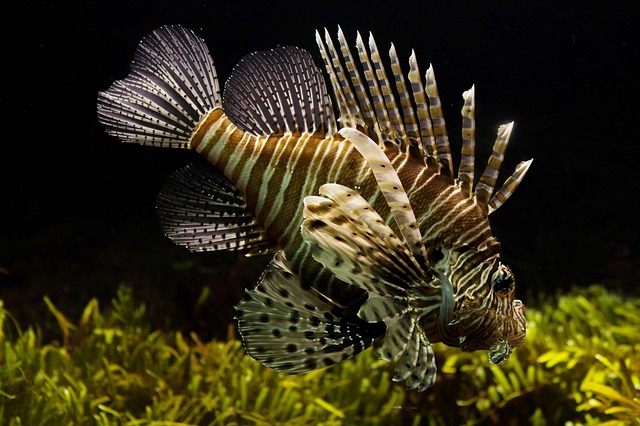Large-scale public aquariums demand intricate design, balancing aesthetics, visitor flow, and maintenance accessibility with sophisticated engineering like advanced water circulation systems and tailored lighting designs. These facilities also serve as research centers requiring cutting-edge technology. Successful custom design creates visually stunning, sustainable environments that educate visitors about marine life while supporting conservation efforts and hosting behind-the-scenes research.
In the realm of captivating public displays, large-scale public aquariums stand out as vibrant game changers. From zoos to museums and marine parks, these aquatic wonders draw folks in with their bustling tapestry of marine life. Custom-designed aquariums, however, are the unsung heroes behind this success. This article explores the art and science behind crafting such unique spaces, delving into understanding the specific needs of these institutions, key design elements, and the profound impact on both visitor experiences and conservation efforts.
Understanding the Unique Needs of Large-Scale Public Aquariums
Large-scale public aquariums, such as those found in zoos, museums, and marine parks, present unique challenges when it comes to designing and maintaining custom-built enclosures. These facilities attract millions of visitors annually, each expecting an immersive and educational experience. As a result, aquarium designers must consider not just the biological needs of the aquatic life but also the aesthetic appeal, visitor flow, and accessibility for maintenance.
The size and complexity of these aquariums necessitate sophisticated engineering solutions. From circulation systems that maintain water quality to lighting designs that mimic natural habitats, every aspect must be tailored to support a diverse array of marine species. Additionally, public aquariums often double as research facilities, requiring state-of-the-art technology for monitoring and data collection. Understanding these multifaceted demands is key to crafting custom-designed aquariums that are both visually stunning and sustainable.
The Art and Science of Custom Aquarium Design
The art of aquarium design is a delicate balance between aesthetics and functionality, especially for large-scale public aquariums. It involves creating immersive underwater worlds that captivate audiences while housing diverse marine life in a safe and sustainable manner. Aquarium designers must consider factors like lighting, water circulation, temperature control, and filtration systems to ensure the well-being of the animals. Each tank is custom-built to accommodate specific species’ needs, from the vast habitats of sharks and rays to the intricate microcosms of coral reefs.
The science behind design includes detailed planning, precise engineering, and a deep understanding of marine ecosystems. Designers collaborate with biologists, zoologists, and engineers to create innovative solutions for large-scale public aquariums, ensuring both visual appeal and ecological balance. This fusion of art and science results in stunning exhibits that not only entertain but also educate visitors about the wonders of the aquatic realm.
Key Components for Successful Implementation
When designing custom-made aquariums for zoos, museums, and marine parks, several key components contribute to a successful implementation. Firstly, the physical structure must be robust enough to support the immense weight of large-scale public aquariums, while also maintaining water quality through efficient filtration systems. This includes materials that are corrosion-resistant in order to withstand constant exposure to moisture and chemical treatments for water maintenance.
Additionally, lighting is a significant factor. Intense, controlled lighting installations are crucial for showcasing marine life effectively, as different species have unique light requirements. Advanced LED technology offers energy efficiency and precise control over color temperature, ensuring the well-being of aquatic creatures while enhancing the visual appeal for visitors.
Benefits and Impact on Visitor Experience and Conservation Efforts
Custom-designed aquariums significantly enhance visitor experiences at zoos, museums, and marine parks. These large-scale public aquariums offer immersive environments that engage audiences by showcasing diverse marine life in a natural setting. The intricate designs not only captivate visitors but also facilitate educational programs, fostering a deeper understanding of aquatic ecosystems. By presenting conservation efforts as part of the visitor experience, these aquariums raise awareness and inspire action, contributing to global initiatives aimed at protecting endangered species and their habitats.
Moreover, custom-designed tanks enable behind-the-scenes research opportunities, allowing scientists to study marine behaviors in controlled environments. This facilitates advanced conservation strategies and helps in breeding programs for critically endangered species. The impact extends beyond entertainment, as these aquariums become vital tools in preserving biodiversity, making them key components of global efforts to protect our oceans.
Custom-designed aquariums are transforming large-scale public aquariums into dynamic, educational spaces that enhance visitor experiences while advancing conservation efforts. By understanding the unique needs of these institutions and leveraging the art and science of aquarium design, key components like efficient circulation systems and natural lighting, we can create vibrant environments that showcase marine life in a way that captivates audiences and fosters a deeper connection with our oceans. These tailored designs not only elevate visitor experiences but also contribute to the global efforts of marine conservation by providing habitats that support research and breeding programs.
